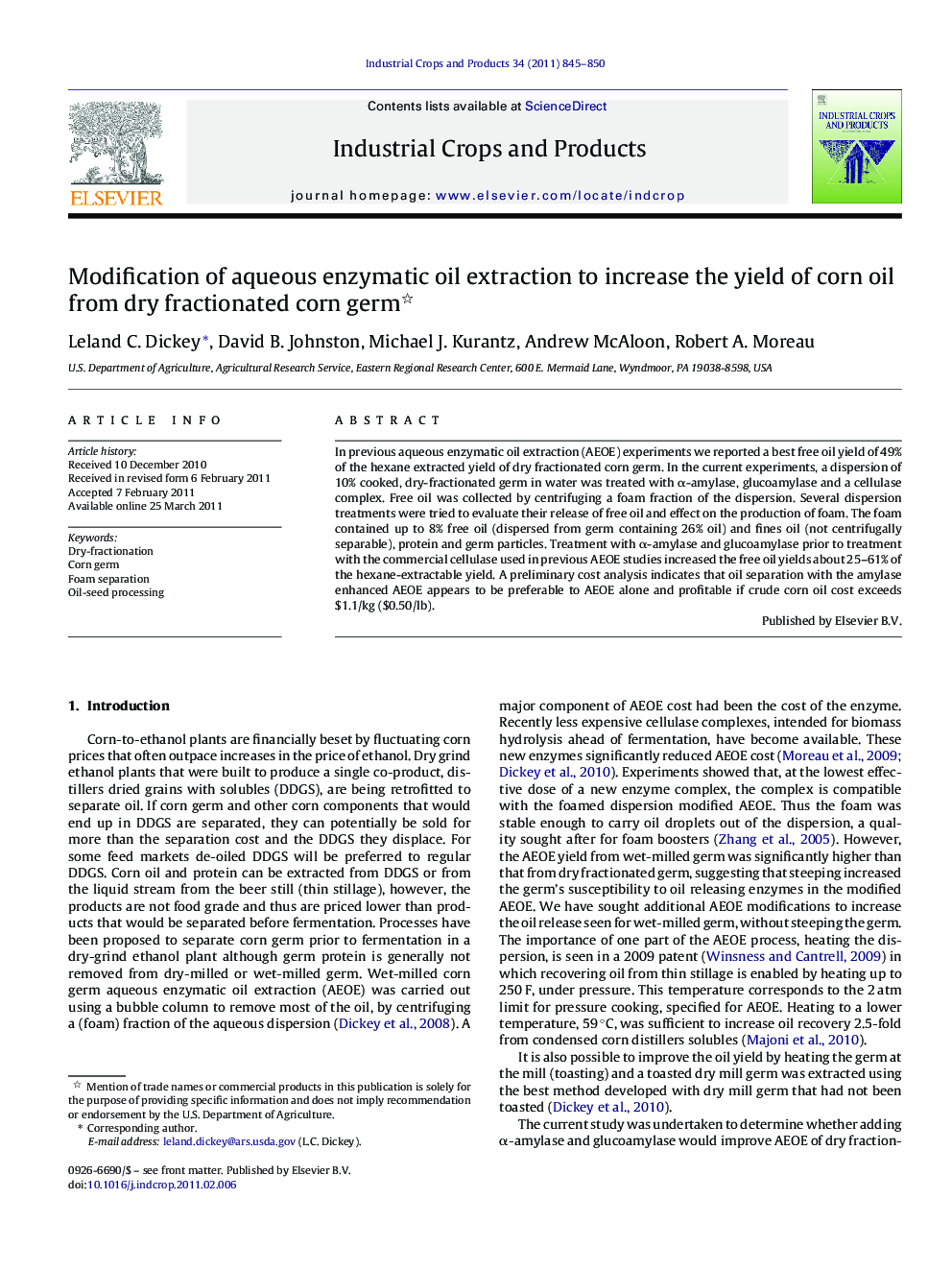| Article ID | Journal | Published Year | Pages | File Type |
|---|---|---|---|---|
| 4514532 | Industrial Crops and Products | 2011 | 6 Pages |
In previous aqueous enzymatic oil extraction (AEOE) experiments we reported a best free oil yield of 49% of the hexane extracted yield of dry fractionated corn germ. In the current experiments, a dispersion of 10% cooked, dry-fractionated germ in water was treated with α-amylase, glucoamylase and a cellulase complex. Free oil was collected by centrifuging a foam fraction of the dispersion. Several dispersion treatments were tried to evaluate their release of free oil and effect on the production of foam. The foam contained up to 8% free oil (dispersed from germ containing 26% oil) and fines oil (not centrifugally separable), protein and germ particles. Treatment with α-amylase and glucoamylase prior to treatment with the commercial cellulase used in previous AEOE studies increased the free oil yields about 25–61% of the hexane-extractable yield. A preliminary cost analysis indicates that oil separation with the amylase enhanced AEOE appears to be preferable to AEOE alone and profitable if crude corn oil cost exceeds $1.1/kg ($0.50/lb).
► Treatment with α-amylase and glucoamylase after the cellulase complex used in previous AEOE studies increased the free oil yields about 26–61% of the hexane-extractable yield. ► A preliminary cost analysis indicates that oil separation with amylases is preferable to AEOE alone and profitable if crude corn oil cost exceeds $1.1/kg ($0.50/lb). ► The foam fraction of a high-oil germ dispersion contained slightly more than 8% free oil (separable by centrifugation) which appears to be a maximum for foams created from foam stabilized by autogenous foam stabilizing compounds.
